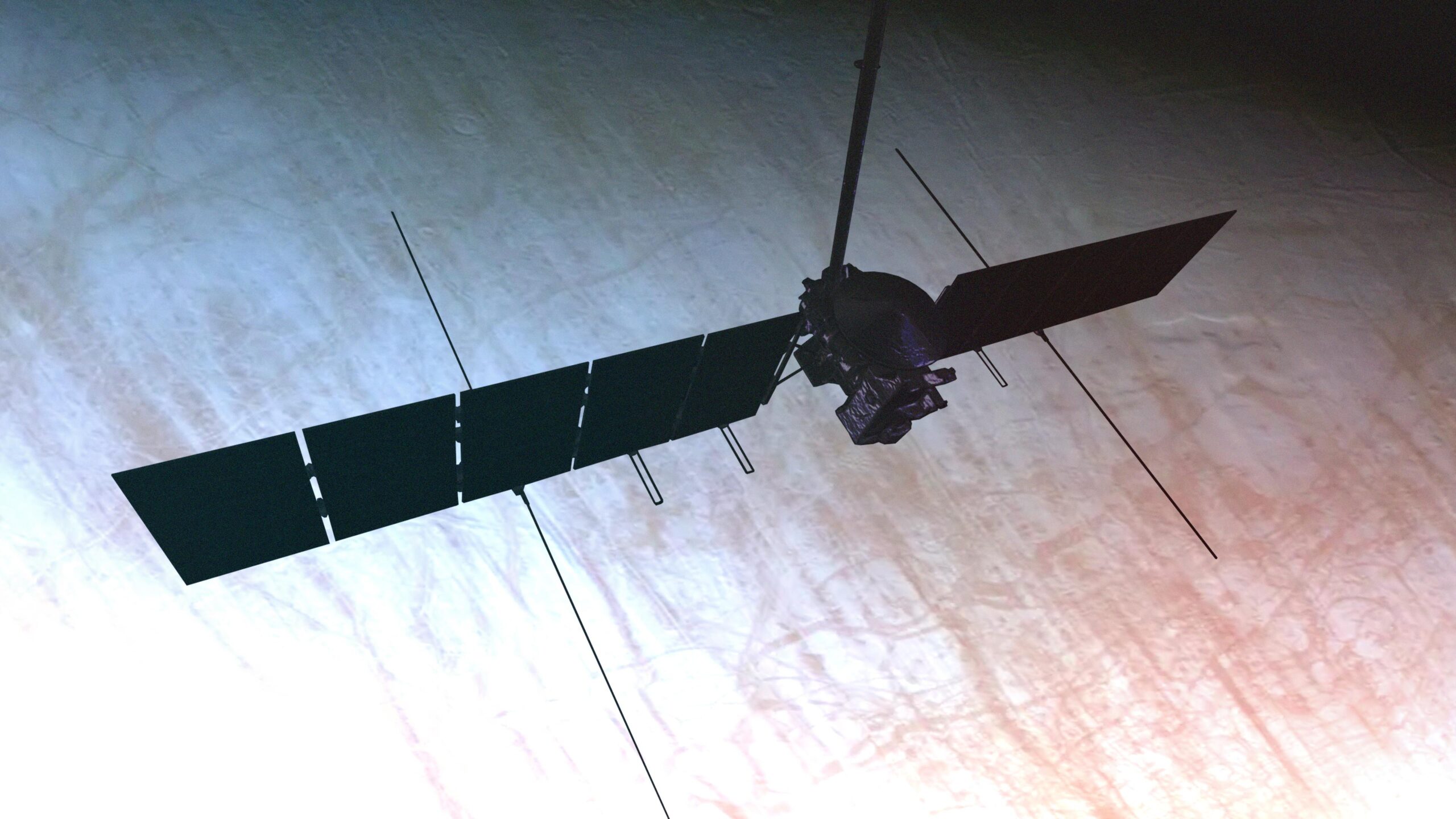NASA’s Europa Clipper: A Journey to Jupiter’s Icy Moon
The Europa Clipper mission, initiated by NASA, is on an ambitious journey to explore Jupiter’s moon, Europa. The spacecraft, launched on October 14, is currently functioning flawlessly and is expected to reach Mars in just three months for a crucial gravity assist. This assist will help propel it towards its final destination, Jupiter, by 2030.
Current Status and Progress
Having successfully launched aboard a SpaceX Falcon Heavy rocket, the Europa Clipper is now approximately 13 million miles (20 million kilometers) away from Earth. Traveling at an impressive speed of 22 miles per second (35 kilometers per second) relative to the Sun, it is rapidly advancing on its long voyage. Notably, the spacecraft is carrying two science instruments, which have already deployed hardware that will remain operational throughout its mission.
The Europa Clipper is the largest spacecraft NASA has ever constructed for a planetary mission. Its journey will cover a staggering 1.8 billion miles (2.9 billion kilometers), culminating in a series of 49 flybys of Europa starting in 2031. The primary goal is to determine whether Europa’s icy surface and underlying ocean possess conditions that could support life.
Technical Milestones and Science Instruments
Since its launch, the engineering teams have been receiving data from the spacecraft, primarily focusing on its hardware’s functionality. The spacecraft has a detailed checklist of tasks to complete on its journey to Jupiter. Some of these early milestones include the deployment of its massive solar arrays, which stretch the length of a basketball court, and the unrolling of the magnetometer’s boom, which extends 28 feet (8.5 meters) from the spacecraft.
The magnetometer’s deployment was confirmed using data from its three sensors, which will later be instrumental in measuring Europa’s magnetic field. This data will help scientists understand the moon’s internal ocean, including its depth and salinity. Following the magnetometer, antennas for the radar instrument were deployed. These include four high-frequency antennas that resemble long poles and eight rectangular very-high-frequency antennas, all crucial for the mission’s scientific objectives.
Gravity Assist and Future Operations
In March 2025, the Europa Clipper will execute its first gravity assist by orbiting Mars. This maneuver is akin to how a ball thrown at a moving train bounces off at a higher speed. The spacecraft’s trajectory has already undergone one correction to ensure it follows the precise path required for this assist. During its time near Mars, the team plans to test its thermal imager and radar instrument, ensuring they function as expected.
Another gravity assist is scheduled for December 2026, where the spacecraft will pass by Earth. This maneuver will further increase its speed and allow the magnetometer to measure Earth’s magnetic field, aiding in its calibration.
Scientific Goals and Mission Management
The Europa Clipper mission is driven by three main scientific objectives: to determine the thickness of Europa’s icy shell and its interaction with the ocean below, to investigate the moon’s compositional makeup, and to study its geological features. Through detailed exploration, scientists aim to uncover more about the potential for life beyond Earth.
The mission is managed by Caltech’s Jet Propulsion Laboratory (JPL) in Pasadena, California, in collaboration with the Johns Hopkins Applied Physics Laboratory (APL) in Maryland. The spacecraft’s design is a joint effort between JPL, APL, and NASA’s Goddard Space Flight Center, among other NASA centers. The launch services were managed by NASA’s Launch Services Program at Kennedy Space Center.
The Significance of the Europa Clipper Mission
This mission represents a significant leap in our understanding of the outer solar system and the potential for life beyond Earth. Europa, with its vast ocean beneath a thick layer of ice, is of particular interest to scientists. The data collected by Europa Clipper could reshape our understanding of the moon and its potential to support life.
Moreover, the success of this mission could pave the way for future explorations of icy worlds in our solar system. By understanding the conditions that might support life, scientists can refine their search for extraterrestrial life, focusing on similar environments beyond our solar system.
Additional Information for Enthusiasts
For those interested in following the progress of the Europa Clipper mission, NASA provides comprehensive resources and updates on its official mission page. Here, you can find detailed information about the spacecraft, its instruments, and the scientific goals driving this historic mission.
The mission’s success will rely on the precise deployment and functioning of its instruments. The engineering and scientific teams are committed to ensuring every aspect of the spacecraft operates as intended, allowing for a seamless journey and successful data collection once it reaches Europa.
In conclusion, NASA’s Europa Clipper mission is not only a testament to human ingenuity and the quest for knowledge but also a pivotal step toward understanding the potential for life on other worlds. As the spacecraft continues its journey, each milestone brings us closer to unraveling the mysteries of Europa and expanding our understanding of the universe.
For more Information, Refer to this article.

































